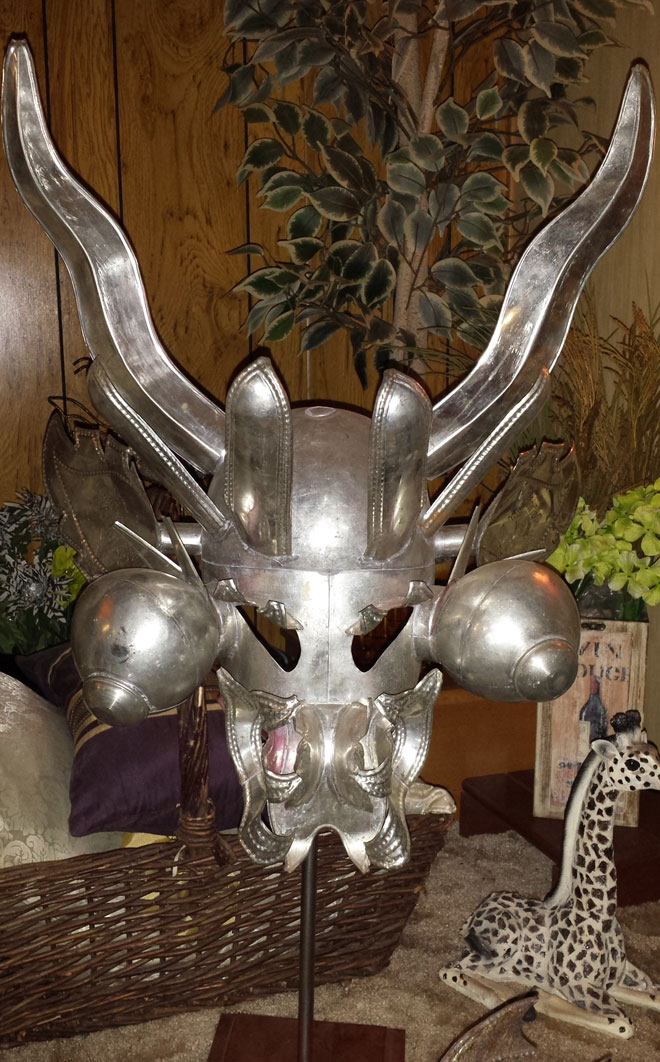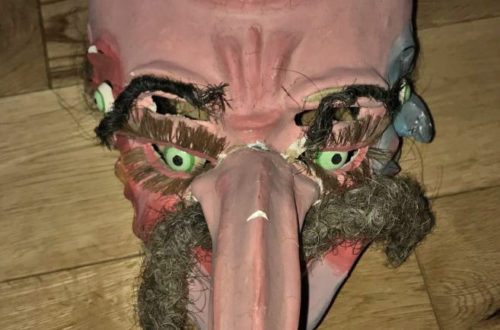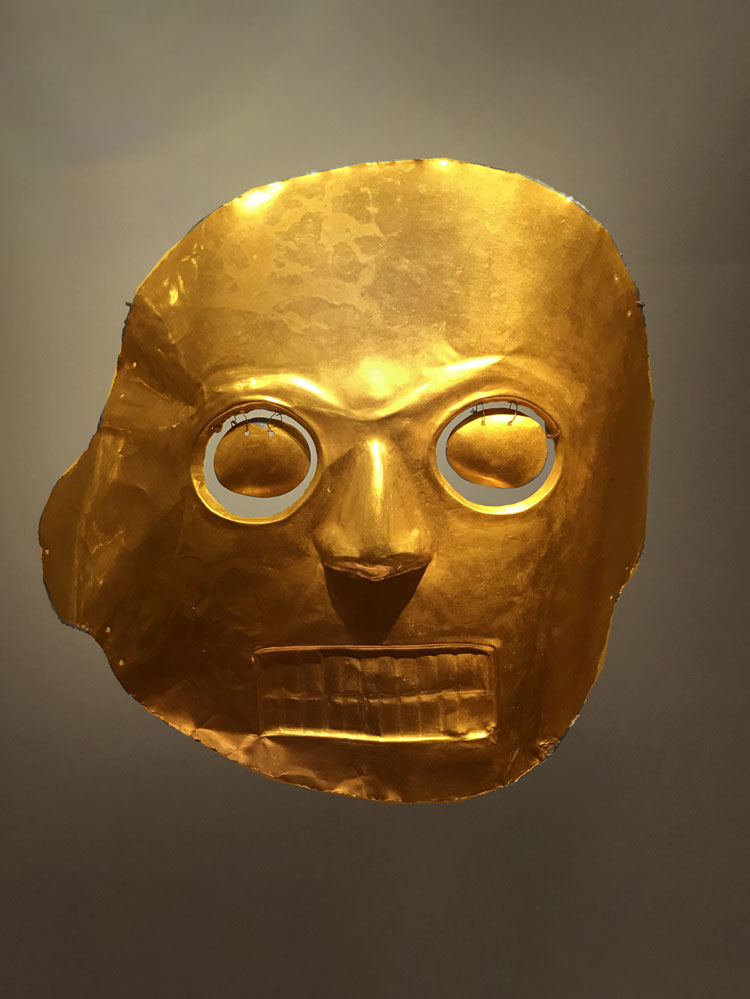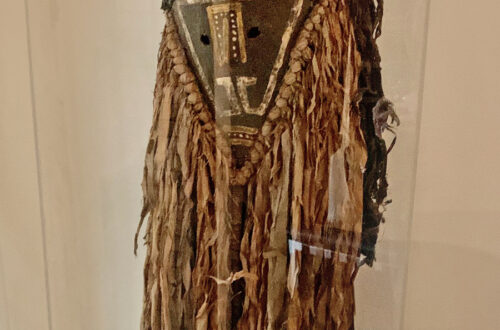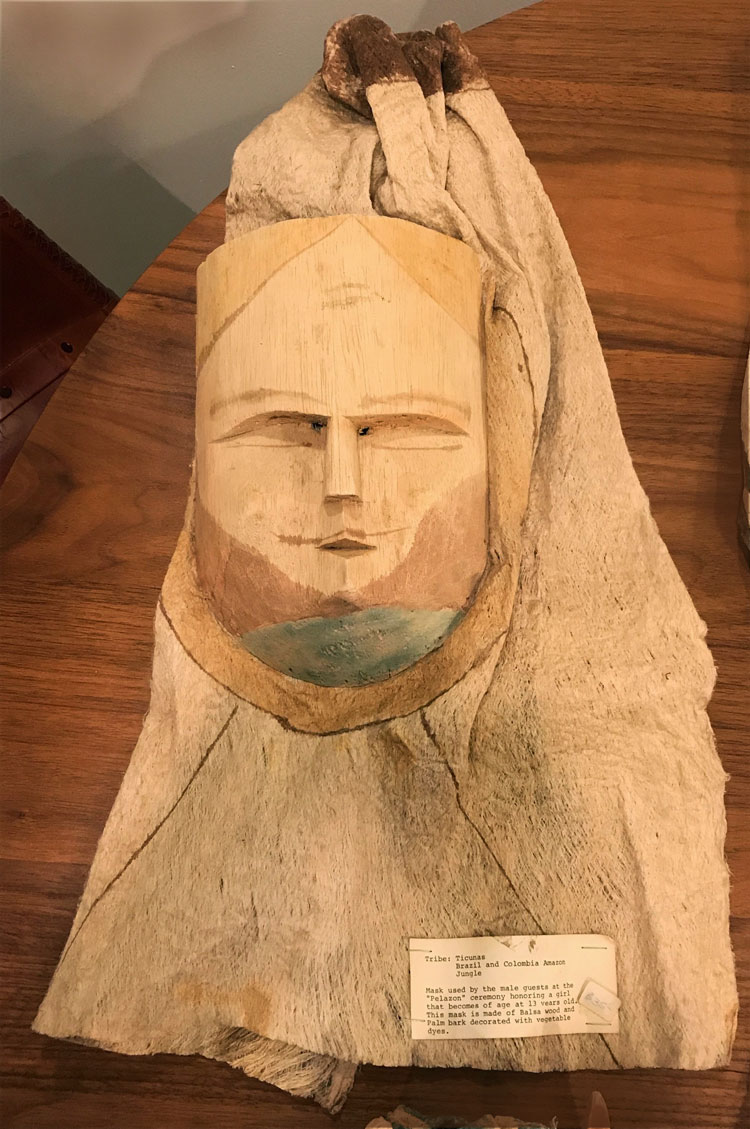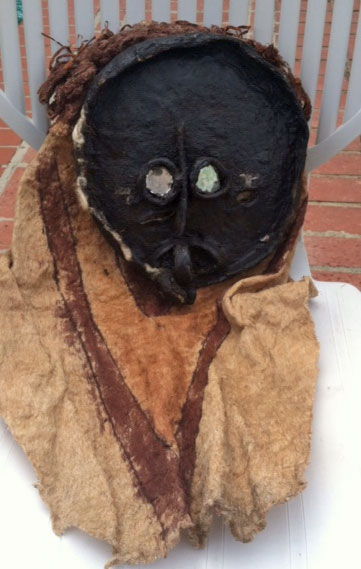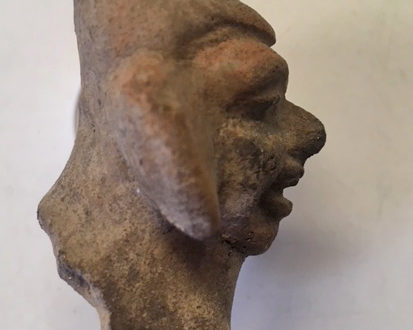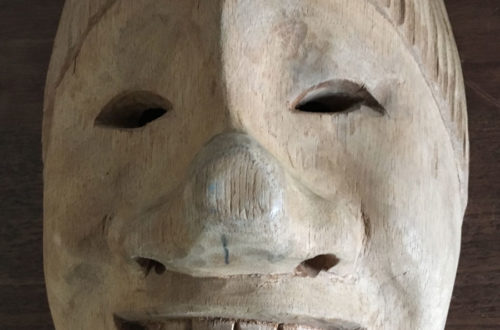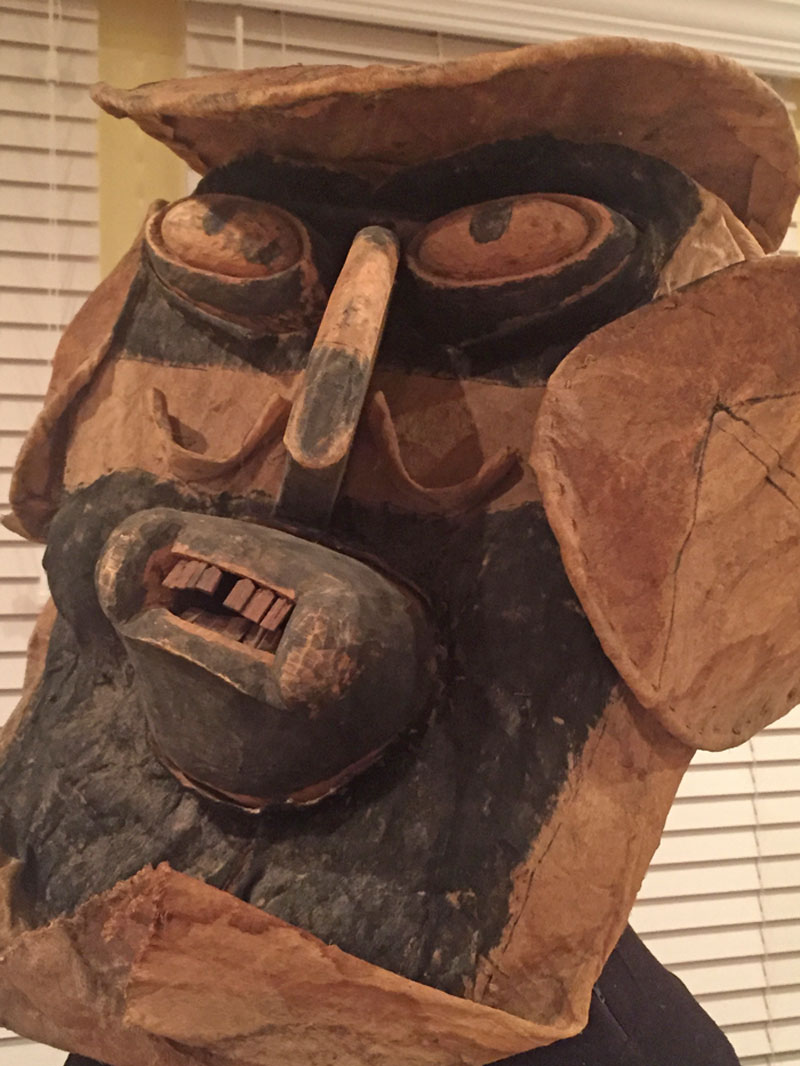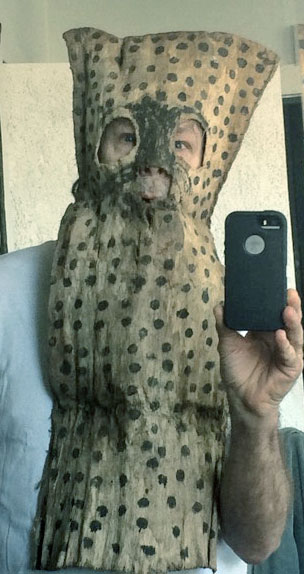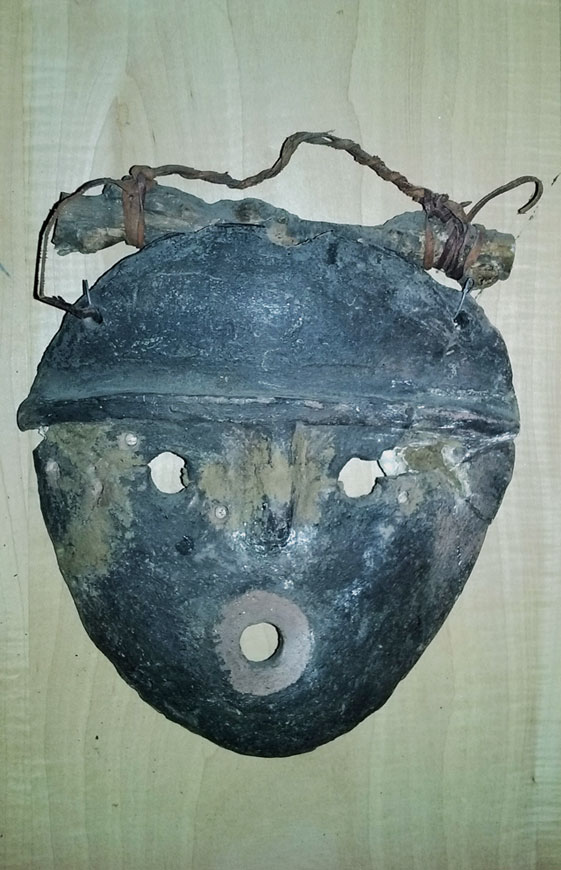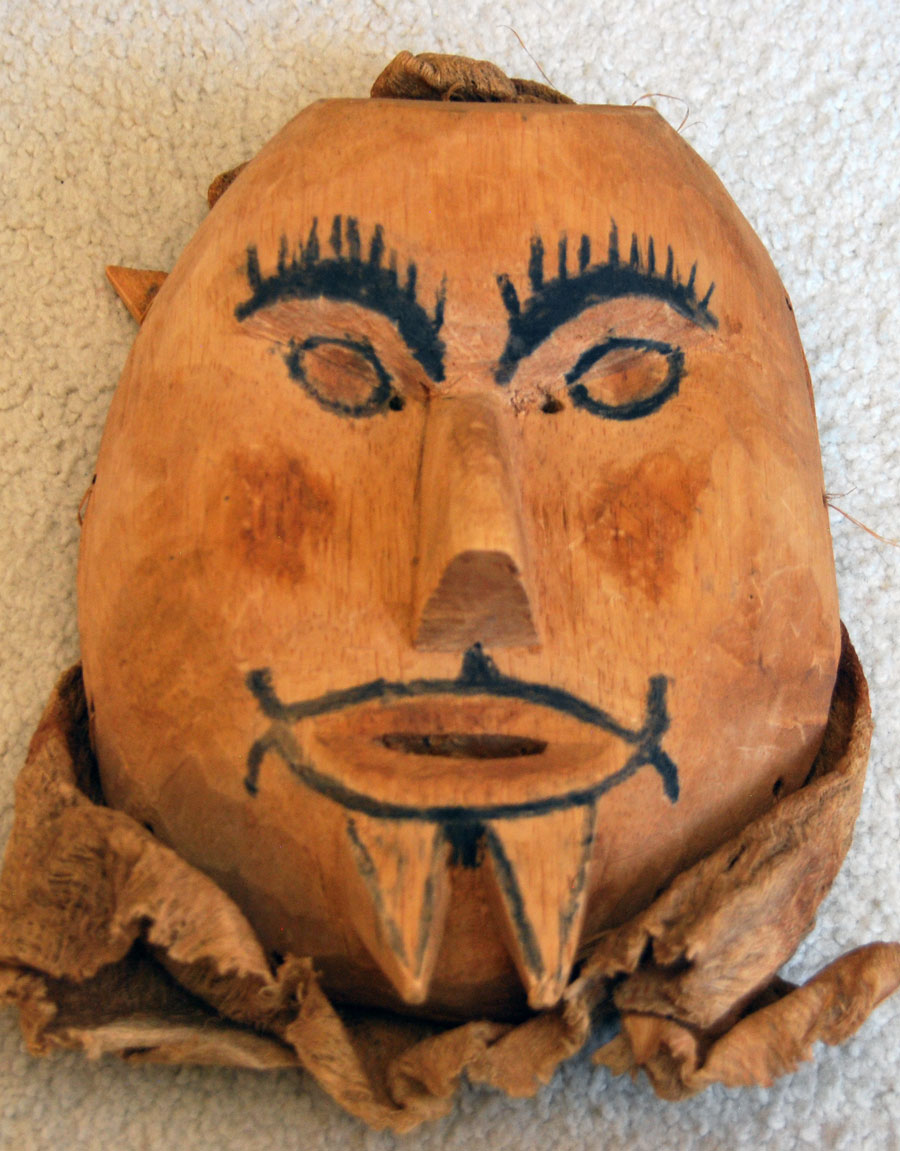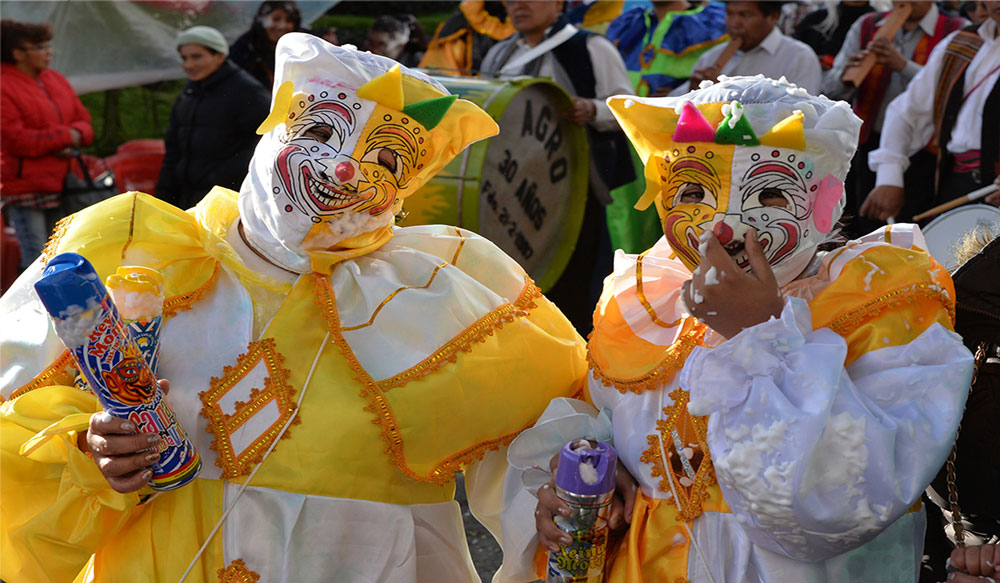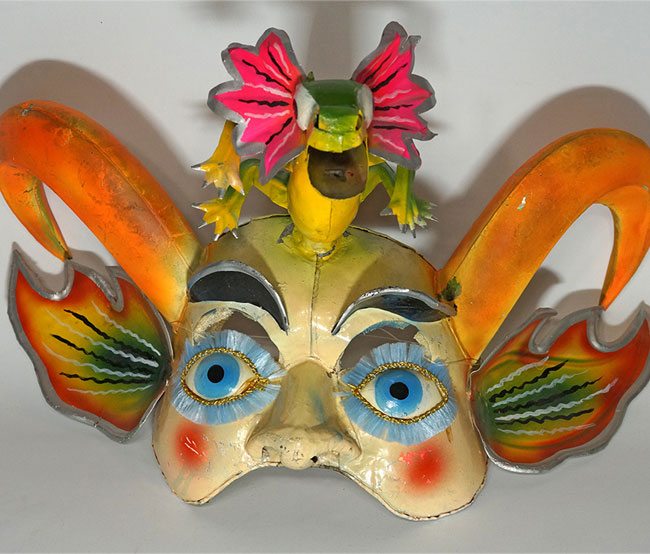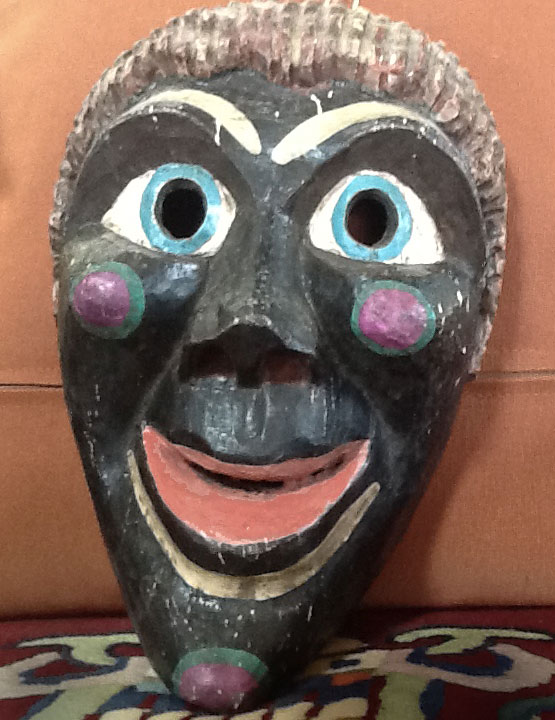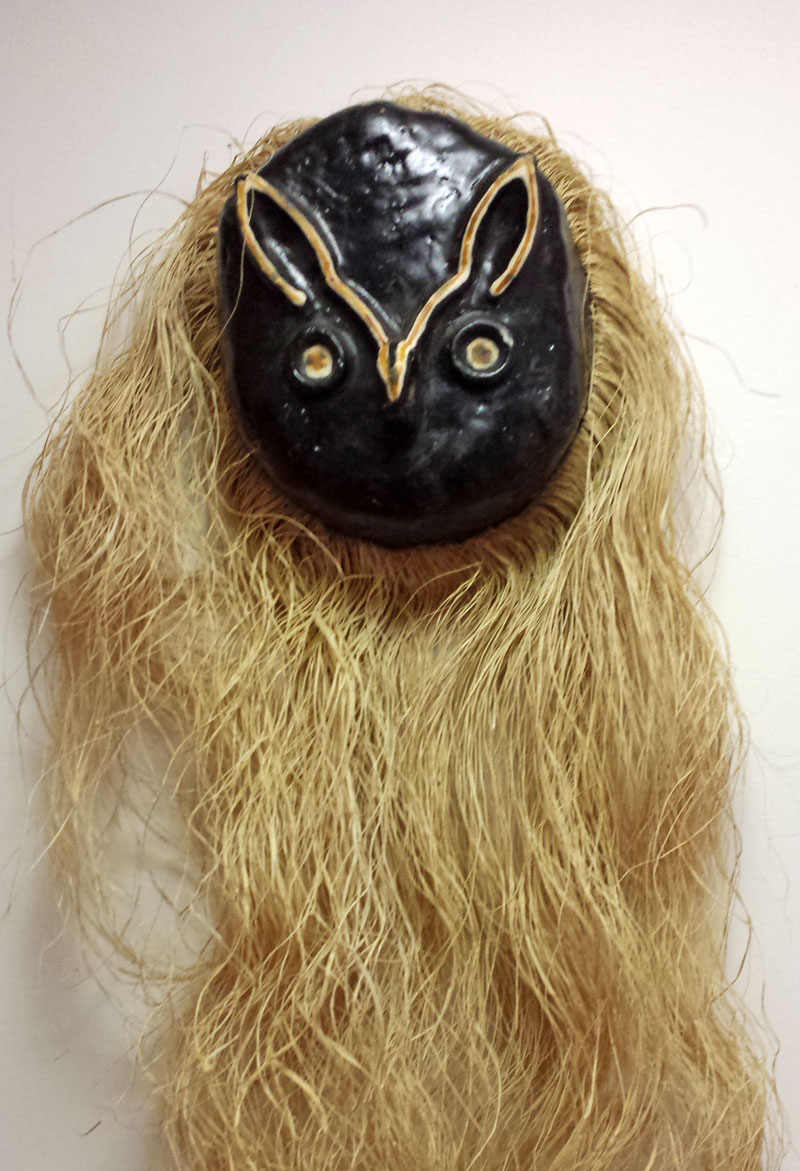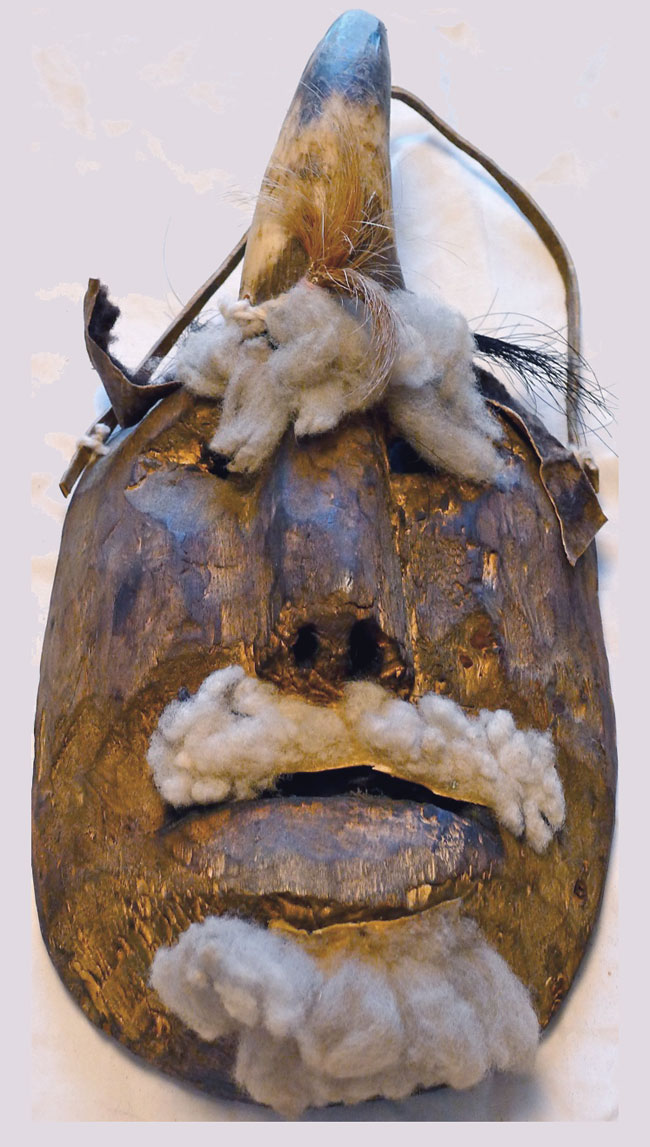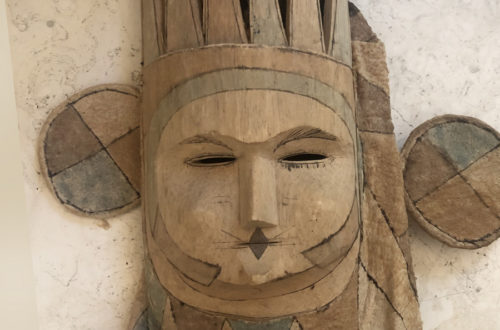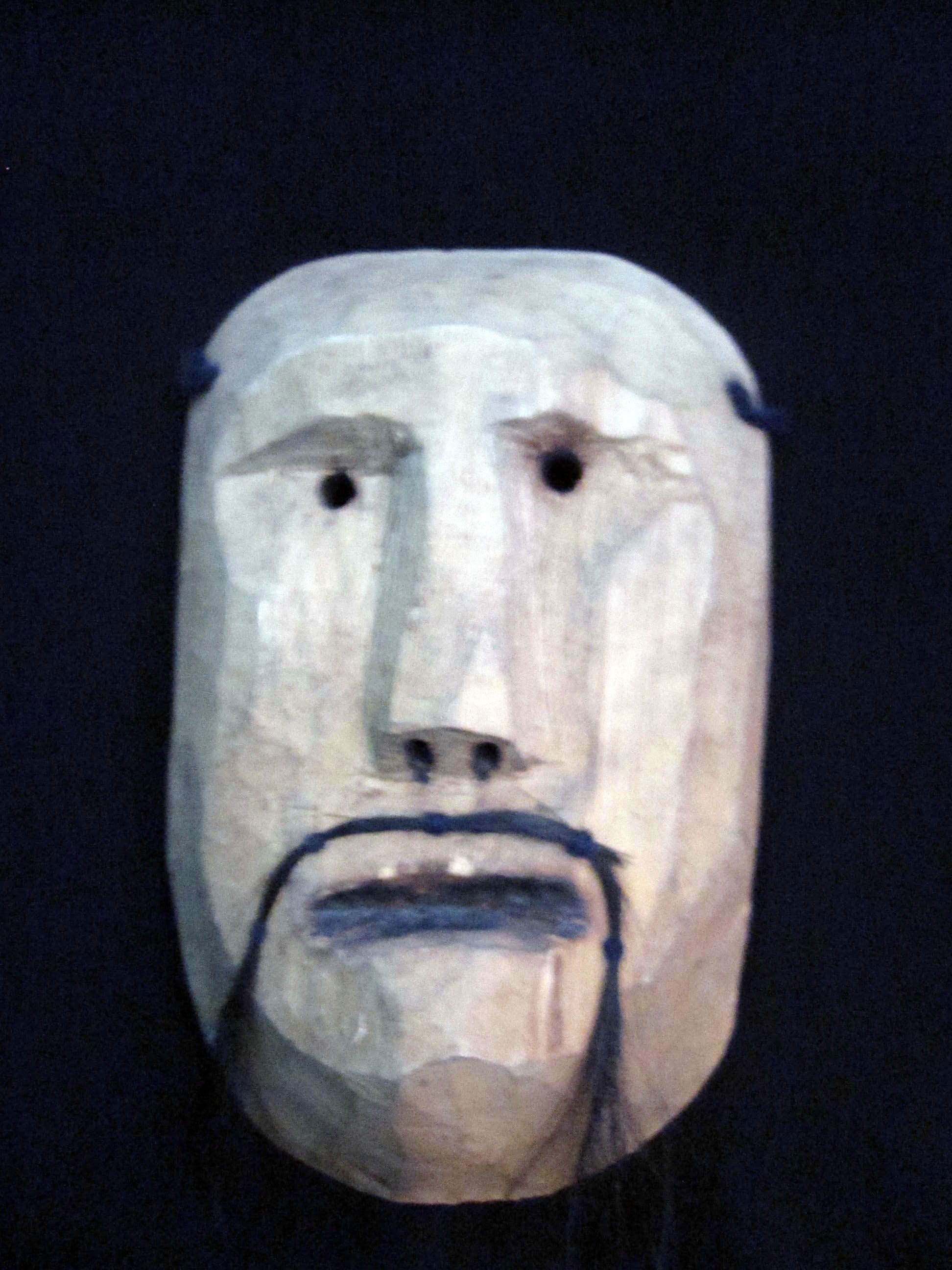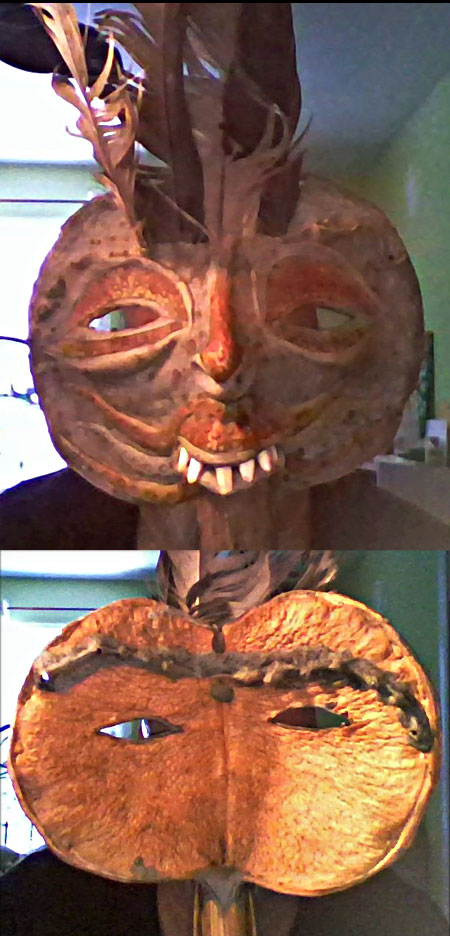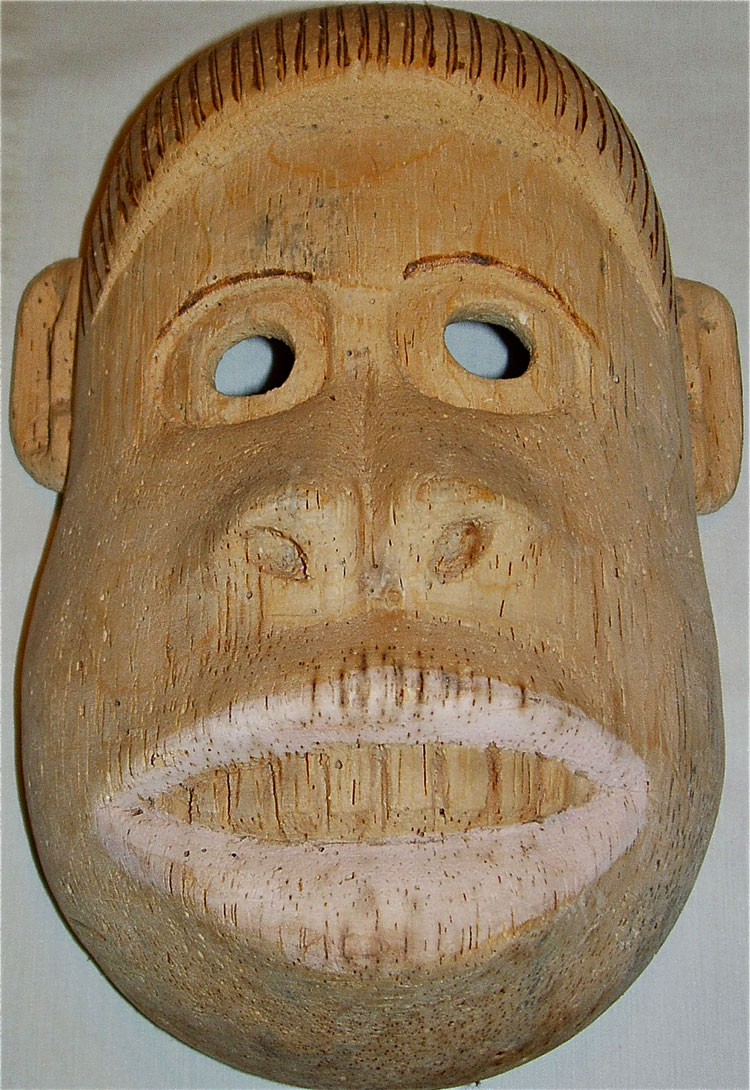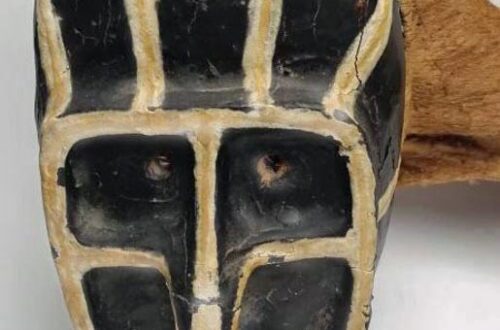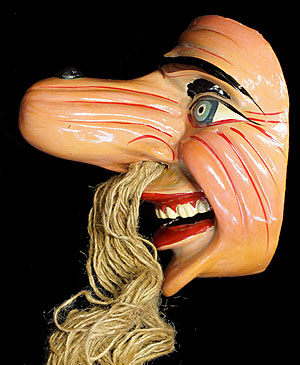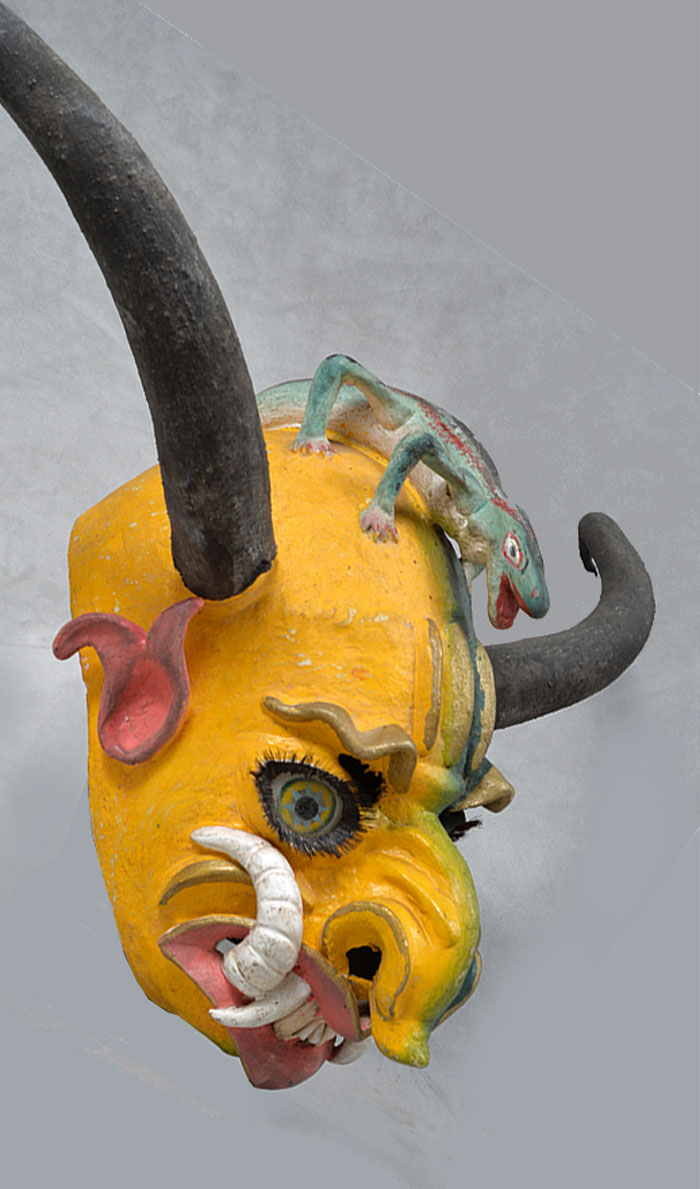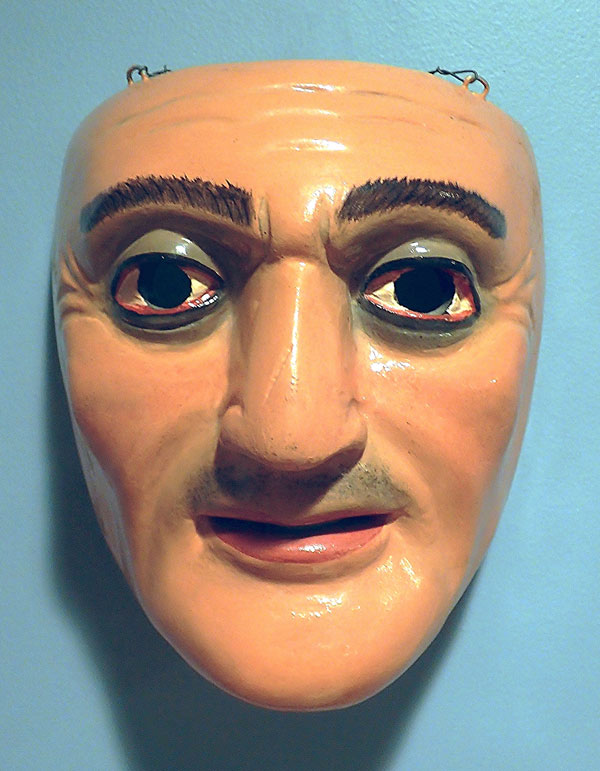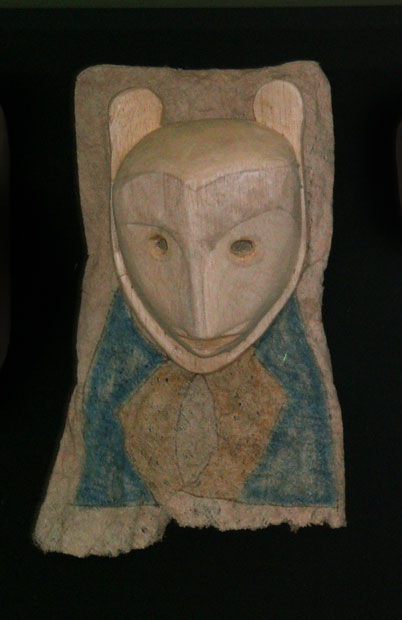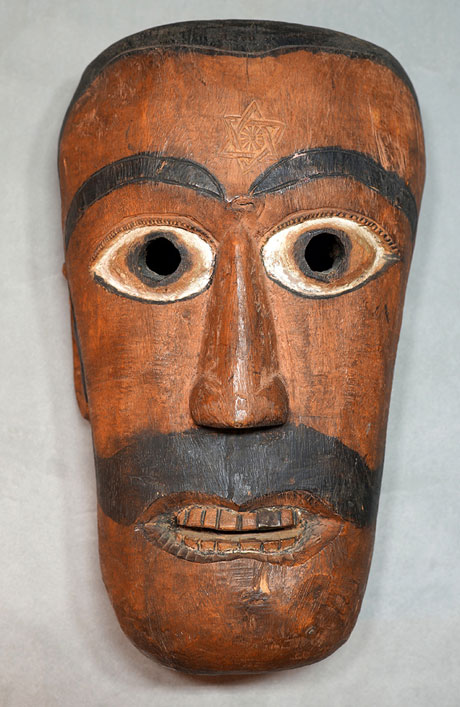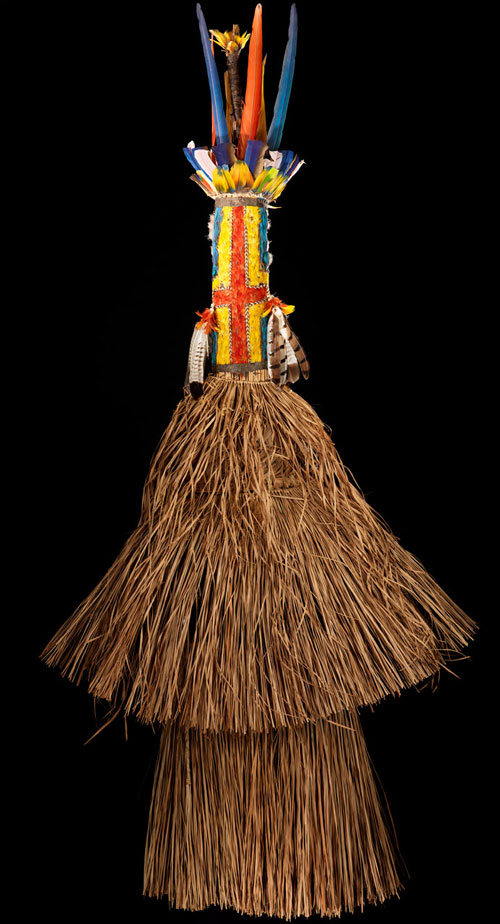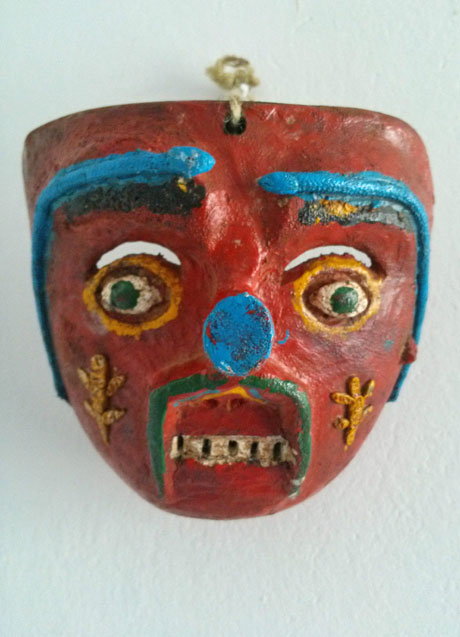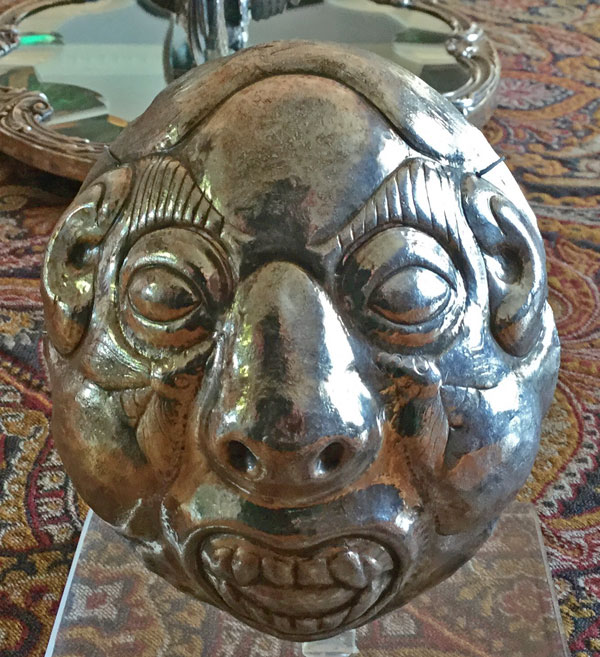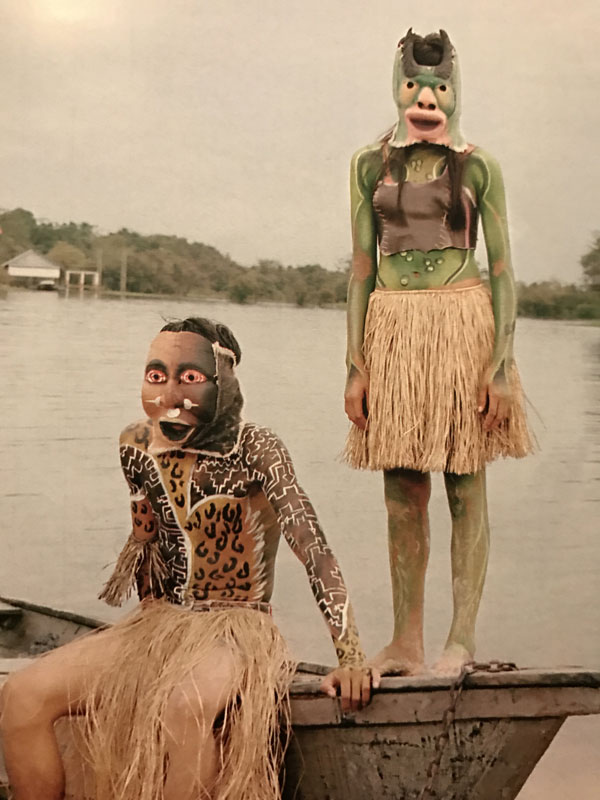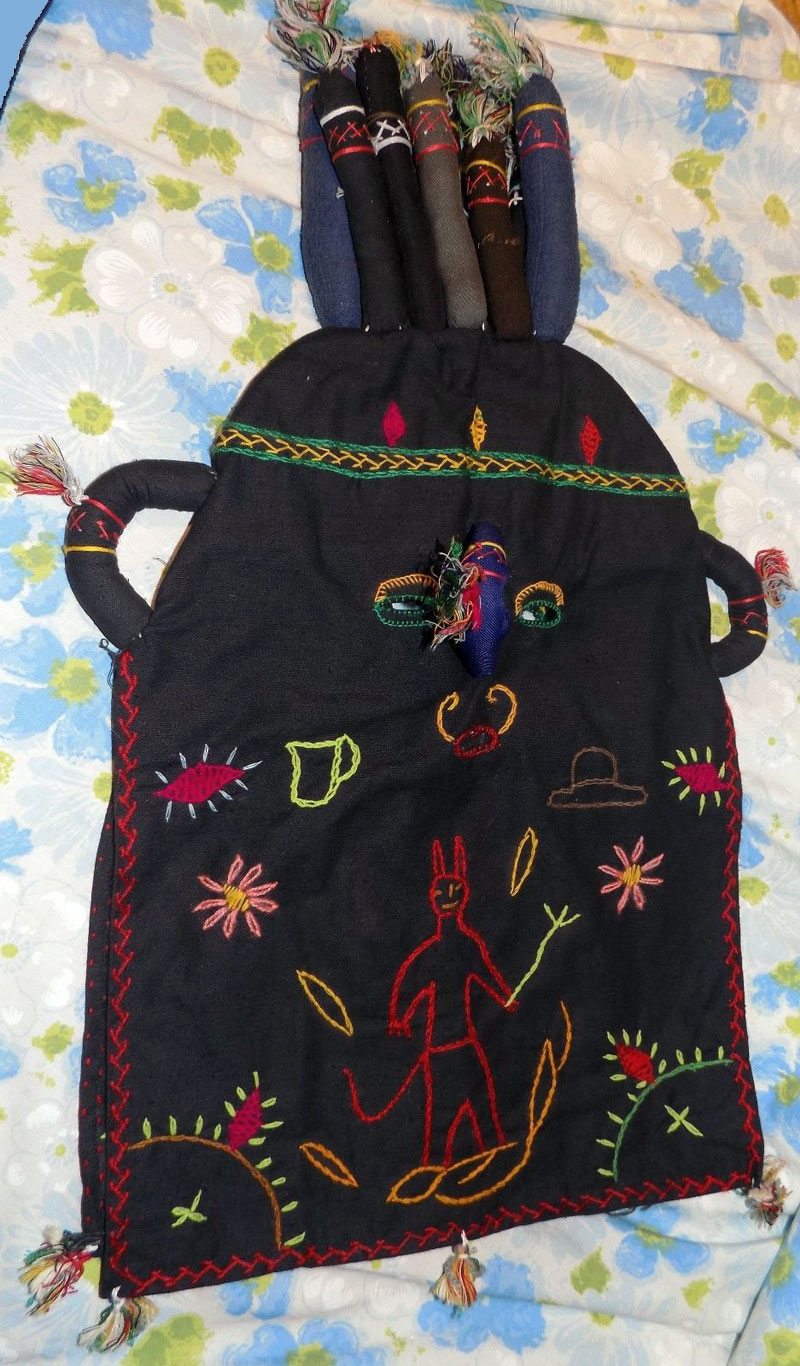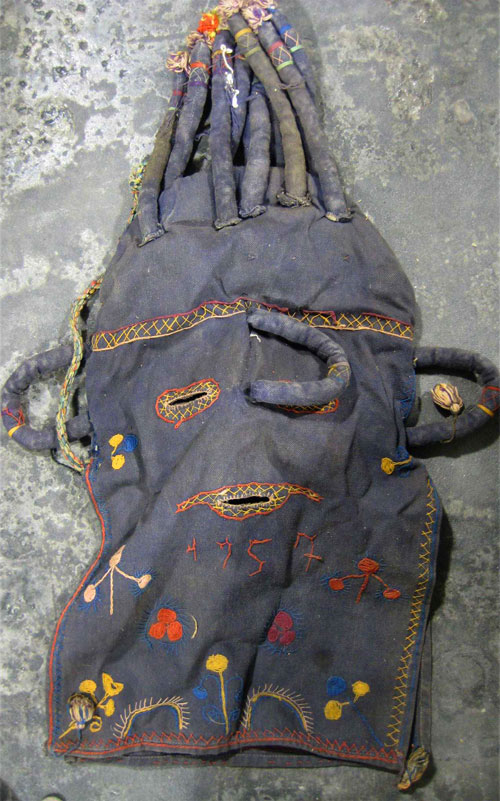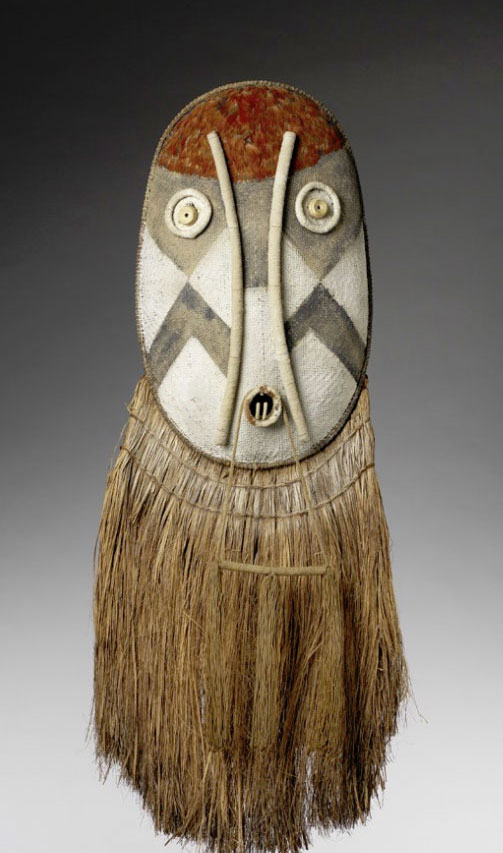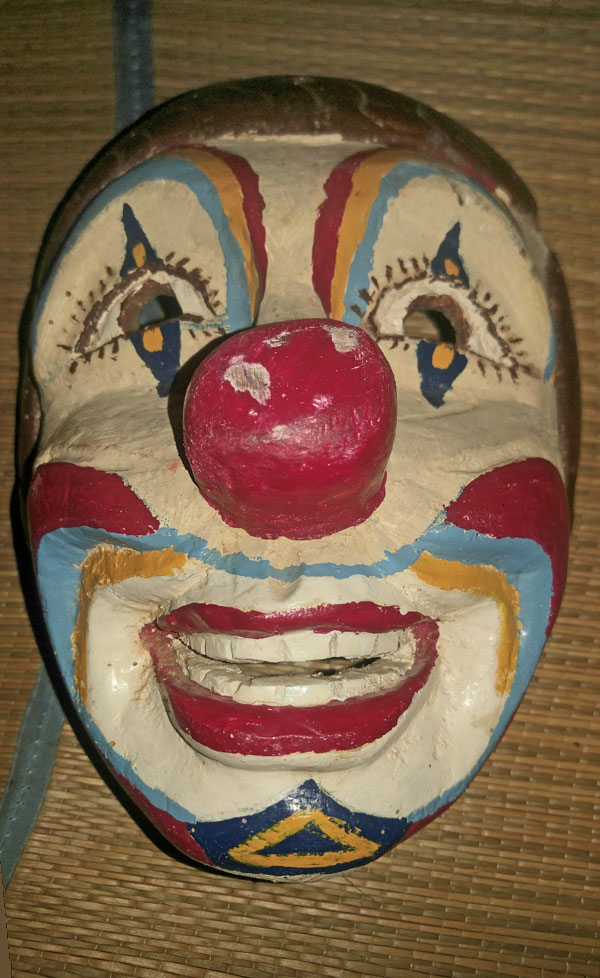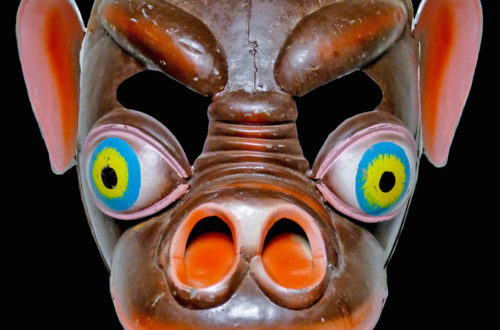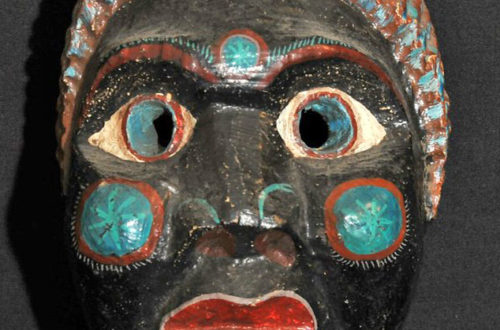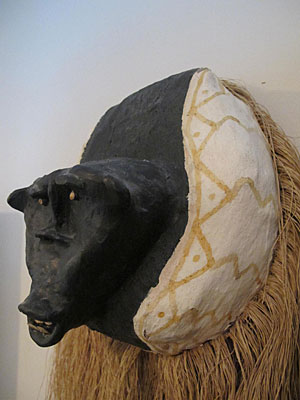Q: I received this mask as a gift. Want to sell it, but not sure of what to ask for it or where is the best place to sell it. Cristi, 1169 A: The Devil mask is the most common character in the famous carnival or Oruro, Bolivia. Called Supay, he represents the Andean pre-Conquest underworld figure that was lord of the hills. When the Spanish priest came his role was changed to that of the Devil. Many Bolivian parade masks are made of sheet metal. This started hundreds of years ago when the silver mines employed most of the Indians. Later, tin mines became important as well. Today metal…
-
-
Tukuma initiation mask from the Amazon
Q: I have five of what I think are women coming of age ceremonial masks. I would love to get an appraisal. Please let me know how you would like to proceed. Thank you very much for your help! Nikki, 1164 A: Thanks for sending the pictures. Instead of paying me for appraising your five Tukuna masks, let’s see if we can get some comments from from our readers. Like the one pictured here, all have descriptions and prices stapled to the bark cloth. This one is priced at $35, the others range up to $85. When were they brought back from the Amazon? If that was in the 1970’s,…
-
Indian mask from the Amazon
Q: Would like to know if you can tell me anything about this mask? Frank, 1151 A: It is a traditional helmet mask made of natural materials by the Tukuna Indians who can be found in the deep rain forest where Peru, Colombia and Brazil come together. Actually, there are over a 100 sparsely located cultures spread out over a large portion of South America’s Amazon area. Unfortunately, these populations are declining rapidly. There is a book called Arts of the Amazon by Barbara Braun, which will tell you more, and includes many beautiful photos of artifacts, including a number of masks. Frank, we enjoyed seeing your photos and are…
-
Big time masquerade in Bolivia
Q: Can you send us some pics from your trip to Bolivia? The Mask Man A: Here are 3 that seem to encapsulate it. The two clowns are from the infinitely less elaborate La Paz carnival. They represent the predominant character, Pepino, who is notorious for running around and spraying everyone with canned foam. The other two show the Oruro carnival. One is a nighttime shot of the “Tobas,” a group representing the Incas who in native revisionist history conquered the invading Spaniards. Although the group is called Tobas and composed of both men and women, the masked characters themselves (always men) are called “Chunchos” or “Indios Chunchos.” The third…
-
Another mask from the Deep South
I normally post only one mask per person, however the previous South American mask from Paraguay is interesting in comparison to this one. Here we have one from the Mapuche people of south-central Chile. Both indigenous groups survived colonization of lower South America, but they are small populations in comparison to the Indian populations further north, so we don’t get to see their masks very often. 1139 Here is what Dean has to say about this Mapuche mask… Carved, plain, human/spirit; leather hanging thong & for the lips; has a horn tacked onto the forehead, along with 3 strips & brown horsehair; wool for the hair, mustache & goatee. 15…
-
Indian mask from South America
Q: In June I will be donating my Mataco & other art from Argentina, which includes the two fine masks from that region that I got from you. It might be best for folks if you posted the photo of this mask because it seems that these plain wood masks are what they are making these days in Paraguay. As I mentioned in my e-mail of today, the Chaco area is the region from which I’ll next be donating my art, which is currently on display in our dining room. I picked for you this mask because it’s pretty rare and interesting. Dean, 1138 A: When the Europeans settled in…
-
Bolivian Devil Mask with Lizard
Q: This Bolivian mask represents a character from the Diablada known as a “Maligno” or “Demonio.” It was made in La Paz, but it was probably used in the Oruro carnival. It’s composed of linen covered in plaster, then painted. The details such as the lizard on the head are mostly plaster, but there are solid wood anchors for the horns (which are removable). The eyes are hand-painted glass, and the front teeth are probably sheep’s teeth. I’m not sure what the eyelashes are made from. The mask dates to the 1960s. Aaron, 1121 A: Once again Aaron shares with us a fine example of traditional masquerade. This is the…
-
Indian mask from SE Brazil
Q: I’m looking for a mask from the Xingu River region. I’m not sure what I’m looking for specifically, but I would love to see what there is! Leah, 1102 A: There are many Indian cultures in the huge Amazon region of Brazil. Though I can’t find anything from the Xingu River area, this excellent Karajas piece come from the Araguaia River area in the Matto Grosso lowlands just to the west of the Xingu. It is a tall and elaborately decorated ijasó headdress with grass mask and skirt. They are always made in pairs, and represent spirits called by shamans to visit the Karajás’ villages. Maybe someone who reads…
-
Recent Amazon Indian masks and costumes
Q: Here are some photos of masquerade of the Cocama people in Santo Tomas, Peru. The pics are in the National Geographic that arrived yesterday, so they are recent. Hans, 1097 A: I love seeing examples of masks that demonstrate how folk art continues to evolve. I don’t believe that the Cocama people would have made masks and costumes like these 50 years ago. You can read more about this in the January 2017 issue of Nat Geo.
-
Another Payaso from the mountains of Ecuador
Q: I wanted to see if you had any info on this mask. Joe, 1096 A: This is all that Joe told me, but his three photos were helpful and I recognized the mask immediately. It is a Payaso (clown) from the Indians of Ecuador. There is a different one shown on our blog archive (category “South America”) that was posted Nov 15, 2016. Please look it up so you can compare the two, and learn more about how them. This one is crudely made and appears to have been used. The one in the archives is new and more carefully carved and painted. A- Save
